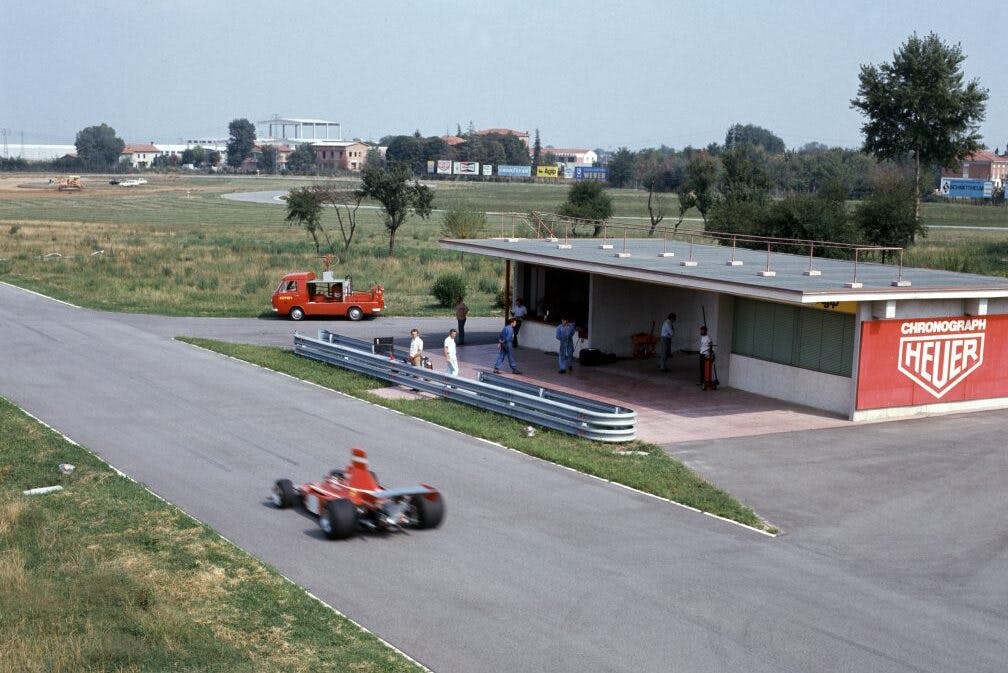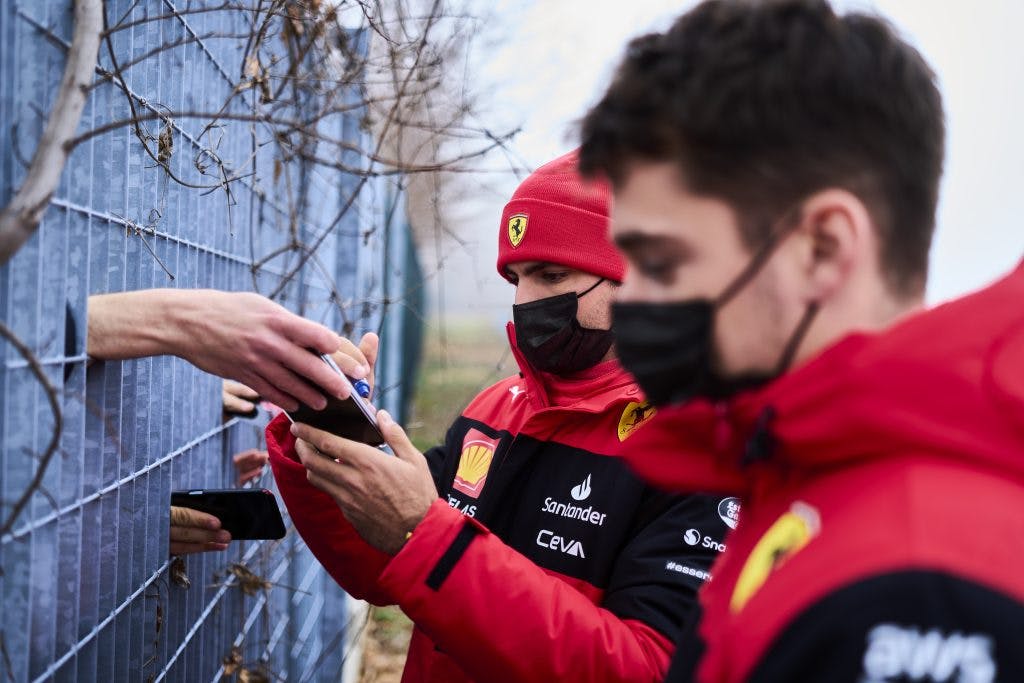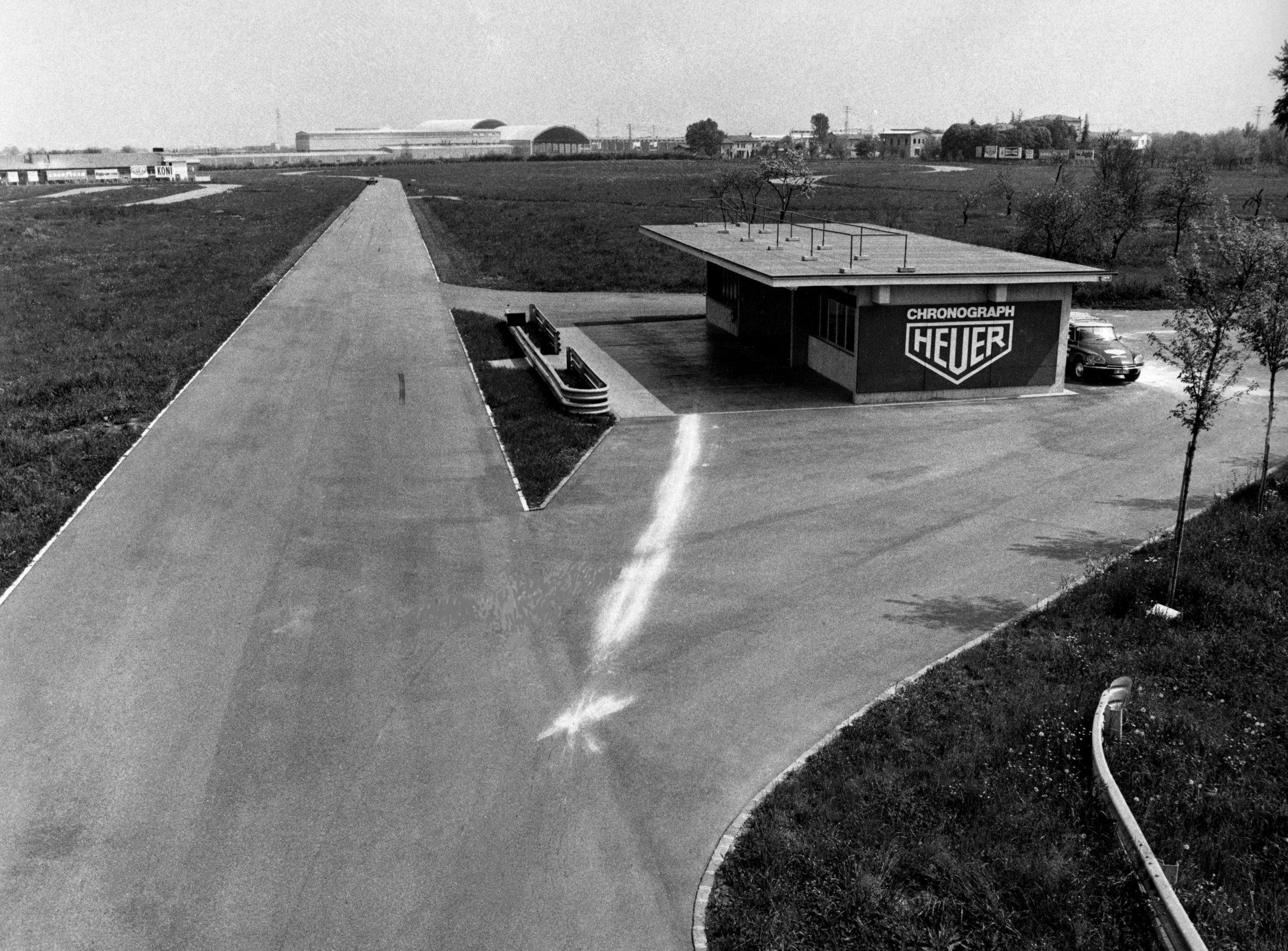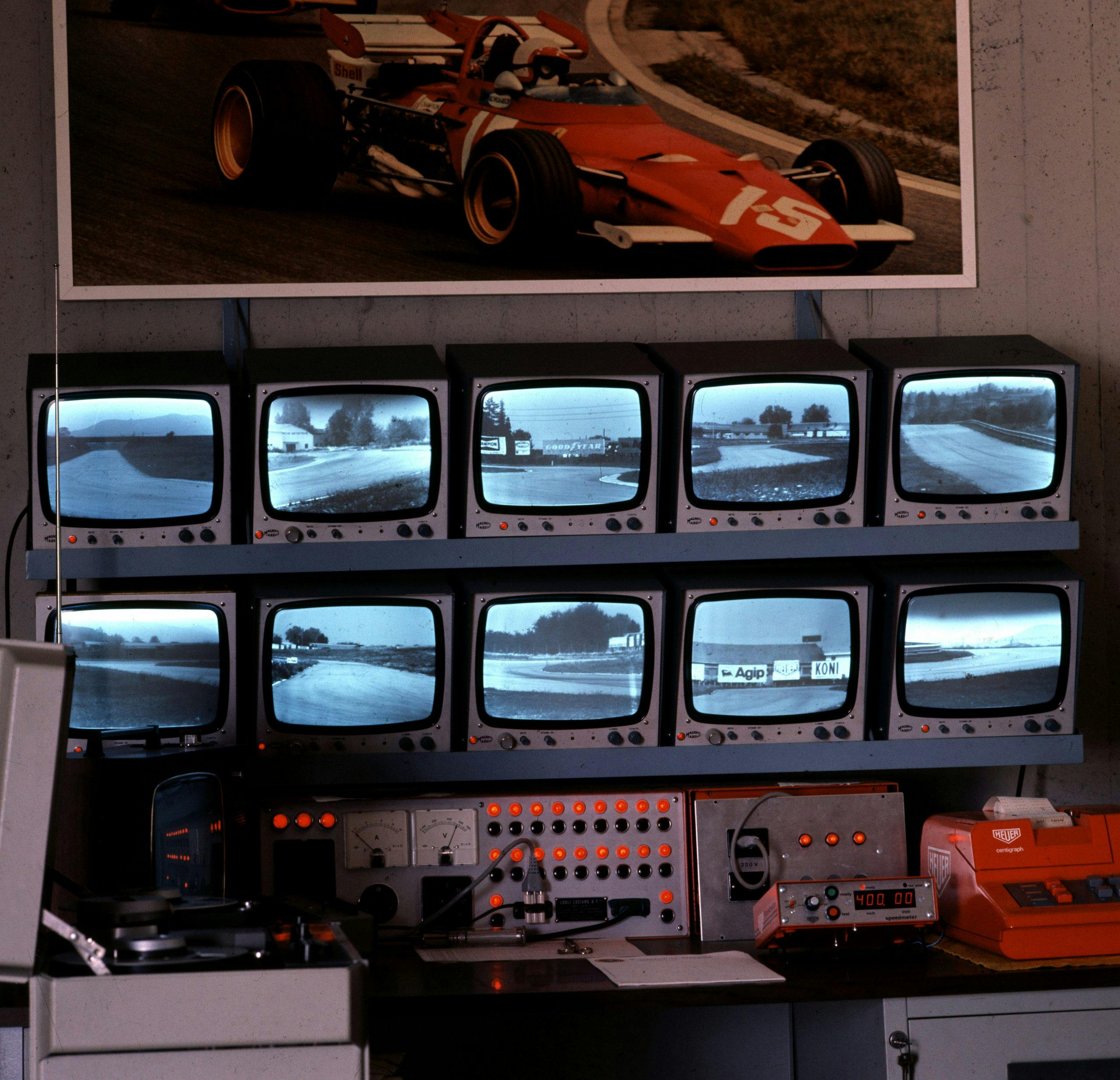Media | Articles
50 years ago, Enzo christened Ferrari’s exclusive test track
Ferrari’s Fiorano test track celebrates its 50th anniversary in 2022. A figure-of-eight draped over the Emilia-Romagna flatlands like one long strand of spaghetti, the 1.88-mile Italian circuit has been a second home for F1 world champions from Scheckter to Schumacher. It’s also introduced generations of motoring hacks and valued clients alike to the latest Ferrari road cars, all of which are honed there.
Visits to “Pista di Fiorano” are always memorable. My first time was 2007, driving the usual three hot laps in a 430 Scuderia. I thought I’d behaved impeccably, but on pitting I was immediately bundled into the back of a black Lancia saloon, driven across town and through a red light to general manager Amedeo Felisa’s office—ostensibly, as it turned out, for a debrief on the Scuderia, but actually to spill more beans on my then full-time employer CAR magazine’s early scoop of the 2011 McLaren MP4-12C.
Another journalist’s yarn from the early 1980s tops that, though. Editor-in-chief of Autocar magazine Steve Cropley remembers being “shooed off” the circuit in what was probably a 308 GTB QV when boss Enzo Ferrari arrived in a new Uno Turbo.
“Enzo ‘checked’ all new Fiat models in those days,” Cropley tells Hagerty. “He did two slow laps in the passenger seat, and there was a black-clad priest in the back wearing one of those four-cornered hats with a pom-pom on top.”

On another visit, Cropley recalls watching Gilles Villeneuve fly off to Monaco in his helicopter midway through a press drive of an early Mondial, probably 1980 or so, “seeing him carefully place an opened bottle of red wine in a pocket on the dashboard.” Up until 2009’s testing ban, all Ferrari’s F1 drivers did countless development laps there.
Marketplace
Buy and sell classics with confidence
Ferrari hasn’t always tested at Fiorano, though. Prior to the circuit’s completion in 1972, it tested race and road cars at the Autodromo di Modena, as did other makers including Maserati and smaller race outfits.
Two factors conspired to make Modena less attractive, as Raffaele de Simone explains. De Simone is a youthful-looking Ferrari veteran of 17 years, current head of development test driving and the “hand” usually on hand at Fiorano press-car launches. (Last year “Raffa” parked his classic black Fiat 500 behind the pits before talking us hacks round the 812 Competizione.)
“Modena Autodrome was progressively abandoned following some severe accidents that happened before 1961, but the urban area around Modena was also expanding, which wasn’t favorable in terms of privacy and secrecy of tests,” he tell us. “That’s why Enzo decided to have a dedicated track built closer to the Maranello factory.”
Fiorano wasn’t Enzo’s plan A. The boss had hoped to build a test track near Gorzano a few miles south-east of Maranello, but when negotiations with the local authority stalled, the focus switched to a parcel of agricultural land Enzo already owned at Fiorano—so close to the Maranello factory that Formula 1 cars could be wheeled there. And still close enough to public roads that Tifosi could sneak a peek.
Enzo’s distinctively rustic farmhouse was a focal point for construction, with the crossover of the figure-of-eight positioned nearby to provide an observation point for Il Commendatore and his most important Scuderia Ferrari engineers of the era. The building was renovated during the track’s construction and equipped with then state-of-the-art camera systems. Today it remains resplendent with whitewashed walls and red window shutters, and the latest press cars are often lined up in Piazza Michael Schumacher outside.
The design of Fiorano was entrusted to Ugo Cavazzuti. “The layout was intended to reproduce some of the most challenging corners of F1 GP tracks of the era,” explains de Simone. “Key reference points included Tarzan at Zandvoort, the Brünnchen jump at the [Nürburgring] Nordschleife and La Rascasse at Monaco.” A figure of eight also allows for a good mix of left- and right-hand corners.
With funding no doubt greatly assisted by Fiat taking its 50 percent stake of Ferrari in 1969, ground was broken in June 1971, and while bad weather delayed the planned date of completion from late that year, the official inauguration was held on April 8, 1972.
“Every single section of circuit should be able to put the dynamic behavior of the car to the test in such a way as to make it easy to identify each car’s problems,” said Enzo Ferrari at the time. “From now on, I don’t want any Ferrari to take to the track or enter range production without passing the Fiorano test with flying colors.”
De Simone believes the 312 P sports prototype—Ferrari’s answer to Ford’s dominance of Le Mans in the late ’60s—was the first car to lap Fiorano and did so that day, even if he’s unsure who exactly drove it. The layout remains much the same now as then.
After a long blast past the pits and through a ballsy left-hand kink, drivers face a big stop into Turn 1 to stress-test both “how a car behaves under heavy braking and the flexibility of its engine on corner-exit,” according to de Simone.
A colleague dropped a LaFerrari in the gravel here, though the name escapes me. Cropley recalls testing an F50 for the first time and being amazed that Eddie Irvine was changing up a gear at the kink in his F1 car where our bemused journo was already on the brakes.
Turns 2 and 3 flick first right then left through what de Simone describes as “equal-radius bends designed to assess the maneuverability of the car and how centrifugal force affects fuel supply.”
A further decent stop follows for Turn 4, which arcs right and uphill towards the bridge over the pit straight. This section replicates the Nürburgring’s old Brünnchen jump, which has long since been reprofiled. You feel and hear revs flick up as the rear axle sheds weight, barriers close in to amplify speed, and you’re unsighted under braking into the right-hand Turn 5 as the bridge continues to rise.
Don’t get caught out … “Corner 5 is deliberately built with an adverse camber,” warns de Simone, while Corner 6 is another big stop, this time into a hairpin inspired by Monaco’s La Rascasse. Slow and not so risky, it’s an officially designated drift corner on press launches.
“Corner 6 is the first of a series of heavy braking areas that continue at Corner 8 and the end of the pit straight,” details de Simone. “This makes Fiorano the hardest in terms of brake usage compared even to a track like Monza, which requires more energy but also has longer straights between corners for cooling.”
From 6 the track logically flows into 7—fastest of all, perfect for assessing downforce, easy to oversteer into the gravel—and finally 8, a fishhook of a left that curves like Zandvoort’s Tarzan in reverse. As you cross back under the circuit, Ferrari now asks that you lift the throttle to respect noise limits: Even on its doorstep Ferrari has to keep the music of those V-12s, V-8s, and new V-6s in check.
Fiorano has changed very little over the last half century. De Simone cites 1996 as a particularly significant year: The circuit received “a new, quicker shape for turns 1, 2 and 3, which basically became one curve [though the old layout is retained as an option], and the straight was lengthened as well, giving us the lap distance we have today. New guard rails and safety measures were also installed.”
Ferrari added an irrigation system in 2001 to collect rainwater for wet-weather testing; a steering pad hugged by the inside of Turn 2 followed in 2006.
As much as journalists and clients want to drive Ferraris at Fiorano, passenger rides can make just as big an impression, simply because you’re witnessing first-hand the potential of these supercars as driven by the people who developed them, in an environment they know like the back of their hand.
I spent a lap or two either squashed into my seat or hanging in the belts of a LaFerrari, astounded by the furious energy and deeper bark of its hybridized V-12, the monster bite of its carbon-ceramic brakes as well as the near-contradictory gentle inputs and calming commentary of de Simone himself. No idea what time we did, but the lead test driver had previously lapped a LaFerrari alone in just 1 minute and 19.7 seconds, a decent chunk faster than the 1:36 recorded by a 288 GTO.
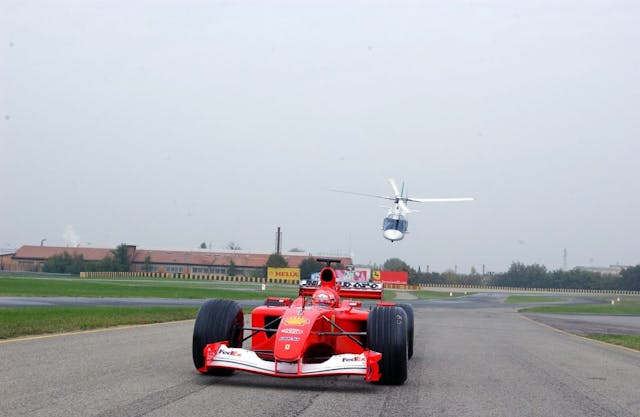
Cropley recounts “three or four sublime and totally effortless laps by Schuey in a 612 Scag.” The same year the 612 launched in 2004, Schumacher lapped his F1 car in just 55.999 seconds, a record that stands to this day.
It’ll be one of the biggest moments in Fiorano’s five-decades-and-counting if someone can dip below that benchmark.
Check out the Hagerty Media homepage so you don’t miss a single story, or better yet, bookmark it.


















